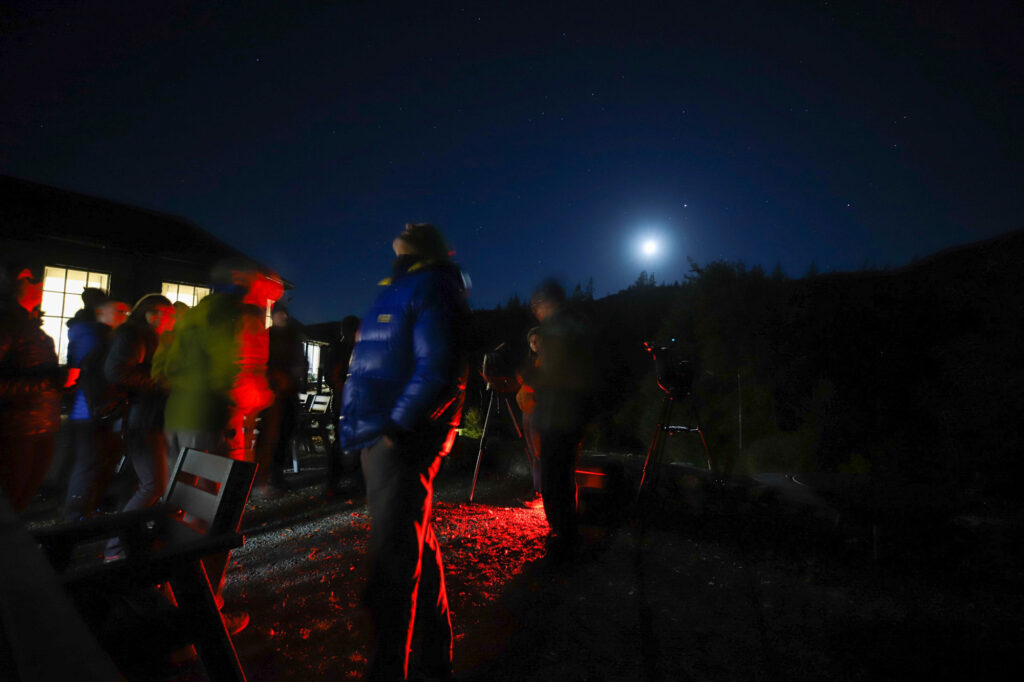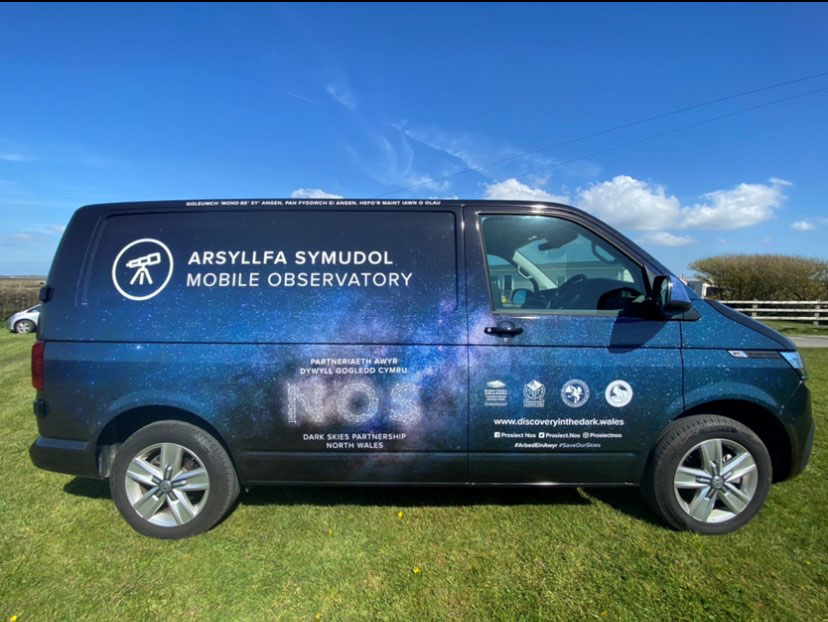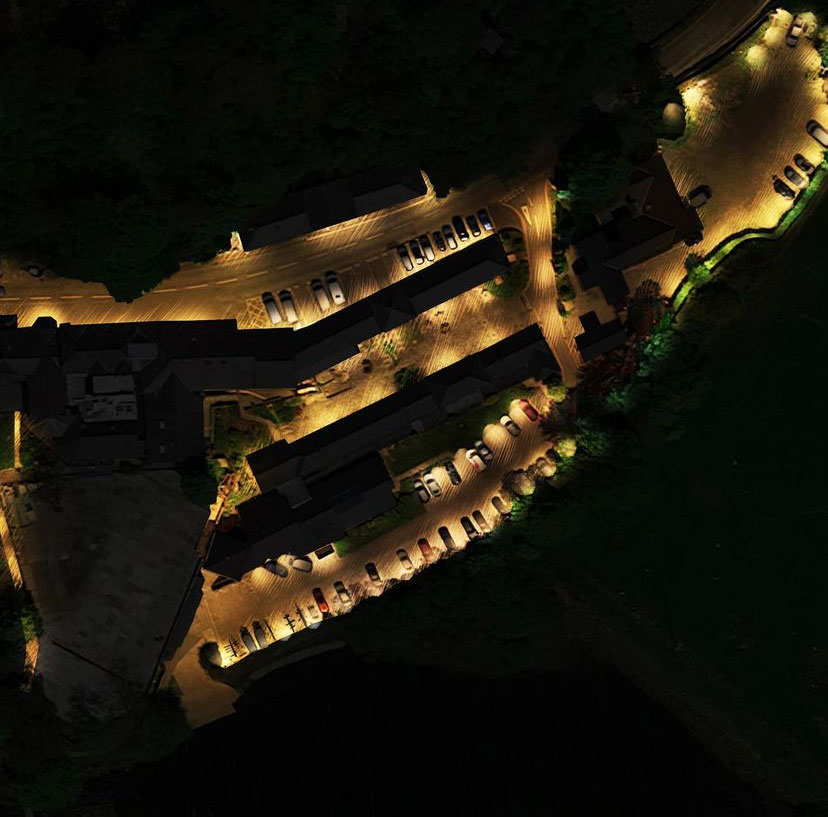Prosiect Nos has had a challenging year, however this hasn’t put a stop to several events and our work to reduce light pollution in our most sensitive areas.

Volunteer ‘Thank you’ stargazing night © Dani Robertson
During lockdown the project ran a jam-packed programme of online events ranging from archaeology and stars to how light pollution impacts our wildlife. Hundreds of people attended, with many from across the globe! Audience members joined from as far away as Canada, Tasmania and New Zealand confirming that our reputation as one of the world’s best Dark Sky locations is truly global!
A big part of keeping our skies dark and retaining our status as an ‘International Dark Sky Reserve’ is monitoring the darkness. We need to keep track of how dark we are to ensure light pollution isn’t growing but is in fact reducing. This year we put a call out for volunteers to help with this important work and we were overwhelmed with the response! Thank you to all who attended the training and became our first ever Dark Sky monitoring volunteers. These volunteers are now a crucial part of the National Park’s work to reduce light pollution, and without them we wouldn’t be able to keep up this important work. They’ll be heading out to take readings on light pollution and feeding this back to our Dark Skies Officer. Without this information we wouldn’t be as able to keep track on light pollution and risk losing our designation. We wish them clear skies over winter as they do their best to keep our skies dark.
Our mobile Observatory is fully kitted out and ready to go! We’ve already had some amazing stargazing evenings, with a thank you session for our volunteer wardens and a very successful evening at Llyn Conwy. Look out for our unmistakable van as we are on our travels around Eryri!

Mobile Observatory © Dani Robertson
A big piece of retrofitting work is now finally complete. Plas y Brenin in Capel Curig has been a well-known source of light pollution for years now, with tales of those practising night navigation ‘cheating’ by guiding themselves off the mountains from the lights on the centre. As the National Outdoor Centre, it’s a high-profile location, with visitors from all over the country. Plas y Brenin wanted to reduce their carbon emissions and are keen to reduce their impact on the National Park’s biodiversity. We worked together with Lighting Design company Dark Source to create a lighting scheme that showcases Dark Sky Lighting. All lights were changed to be Dark Sky compliant, downward facing, fully shielded and at a temperature of 2700 Kelvin. The centre is now no longer a light polluter, with safer lighting for their customers who are better able to navigate the site at night. Bats and other nocturnal species have already returned to the areas around the centre as they are no longer impacted by the lights and the Milky Way is clearly visible to anyone sat in the ‘love seat’ overlooking Llynnau Mymbr. Not only is the site safer to visitors, but it is also safer for road users who will no longer be dazzled from poor lighting driving through Capel Curig. The changes have saved the centre thousands a year in electricity bills and will save an impressive two tons of CO2 annually, vastly improving their Carbon footprint and greatly reducing the impact of this business on the National Park.

Design art work by Kerem Asforoglu, Dark Source © Dani Robertson
In the new year, look out for the first ever Wales-wide Dark Sky week from the 19th to the 27th of February. All eight of the protected landscapes in Wales are coming together to raise awareness of light pollution and celebrate the Dark Skies of Wales. We’ll be releasing a full timetable of events, both online and in person so keep an eye on our website and social media channels for more details!

